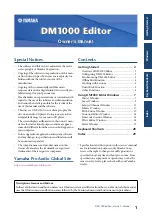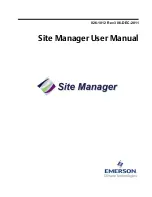
Security
ExtremeWare XOS 11.1 Concepts Guide
232
A Windows XP 802.1x supplicant can be authenticated as a computer or as a user. Computer
authentication requires a certificate installed in the computer certificate store, and user authentication
requires a certificate installed in the individual user's certificate store.
By default, the Windows XP machine performs computer authentication as soon as the computer is
powered on, or at link-up when no user is logged into the machine. User authentication is performed at
link-up when the user is logged in.
Windows XP also supports guest authentication, but this is disabled by default. Refer to relevant
Microsoft documentation for further information. The Windows XP machine can be configured to
perform computer authentication at link-up even if user is logged in.
Authentication Server Side
The RADIUS server used for authentication must be EAP-capable. Consider the following when
choosing a RADIUS server:
●
Types of authentication methods supported on RADIUS, as mentioned previously.
●
Need to support Vendor Specific Attributes (VSA). Parameters such as
Extreme-Netlogin-Vlan
(destination vlan for port movement after authentication) and
Extreme-NetLogin-only
(authorization for network login only) are brought back as VSAs.
●
Need to support both EAP and traditional username-password authentication. These are used by
network login and switch console login respectively.
Multiple Supplicant Support
An important enhancement over the IEEE 802.1x standard, is that ExtremeWare supports multiple
clients (supplicants) to be individually authenticated on the same port. This feature makes it possible for
two client stations to be connected to the same port, with one being authenticated and the other not. A
port's authentication state is the logical “OR” of the individual MAC's authentication states. In other
words, a port is authenticated if any of its connected clients is authenticated. Multiple clients can be
connected to a single port of authentication server through a hub or layer-2 switch.
Multiple supplicants are supported in ISP mode for both web-based and 802.1x authentication. In
Campus mode multiple supplicants are only supported if all supplicants move to the same VLAN.
The choice of web-based versus 802.1x authentication is again on a per-MAC basis. Among multiple
clients on the same port, it is possible that some clients use web-based mode to authenticate, and some
others use 802.1x.
NOTE
With multiple supplicant support, after the first MAC is authenticated, the port is transitioned to the authenticated
state and other unauthenticated MACs can listen to all data destined for the first MAC. This could raise some
security concerns as unauthenticated MACs can listen to all broadcast and multicast traffic directed to a Network
Login-authenticated port.
Summary of Contents for ExtremeWare XOS 11.1
Page 16: ...Contents ExtremeWare XOS 11 1 Concepts Guide 16...
Page 20: ...Preface ExtremeWare XOS 11 1 Concepts Guide 20...
Page 21: ...1 Using ExtremeWare XOS...
Page 22: ......
Page 78: ...Managing the ExtremeWare XOS Software ExtremeWare XOS 11 1 Concepts Guide 78...
Page 168: ...Virtual LANs ExtremeWare XOS 11 1 Concepts Guide 168...
Page 200: ...Policies and ACLs ExtremeWare XOS 11 1 Concepts Guide 200...
Page 252: ...Security ExtremeWare XOS 11 1 Concepts Guide 252...
Page 265: ...2 Using Switching and Routing Protocols...
Page 266: ......
Page 294: ...Ethernet Automatic Protection Switching ExtremeWare XOS 11 1 Concepts Guide 294...
Page 354: ...Extreme Standby Router Protocol ExtremeWare XOS 11 1 Concepts Guide 354...
Page 416: ...IP Multicast Routing ExtremeWare XOS 11 1 Concepts Guide 416...
Page 417: ...3 Appendixes...
Page 418: ......
Page 432: ...Software Upgrade and Boot Options ExtremeWare XOS 11 1 Concepts Guide 432...
















































